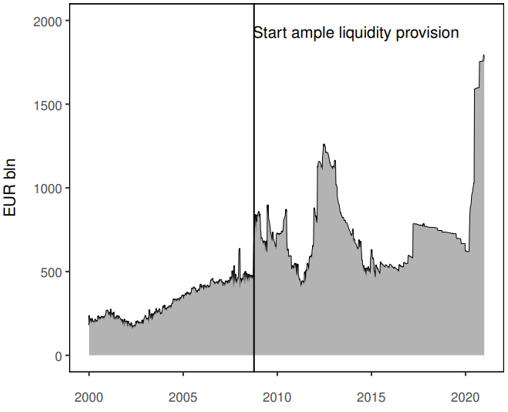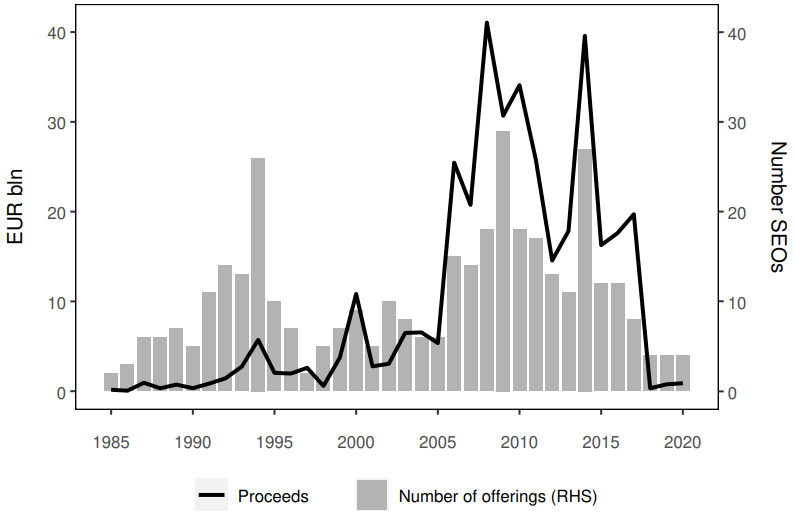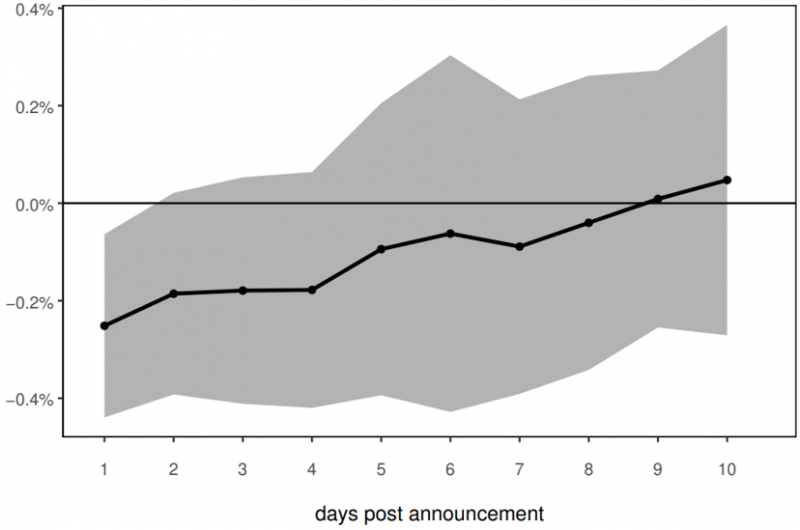References
Baker, M. and Wurgler, J. (2002), ‘Market Timing and Capital Structure’, The Journal of Finance 57(1), 1– 32.
Brunnermeier, M. K. and Sannikov, Y. (2016), The I Theory of Money, NBER Working Paper 22533.
Carpinelli, L. and Crosignani, M. (2021), ‘The design and Transmission of Central Bank Liquidity Provisions’, Journal of Financial Economics 141(1), 27–47.
Cornett, M. M. and Tehranian, H. (1994), ‘An Examination of Voluntary Versus Involuntary Security Issuances by Commercial Banks: The Impact of Capital Regulations on Common Stock Returns’, Journal of Financial Economics 35(1), 99–122.
DeAngelo, H., DeAngelo, L. and Stulz, R. M. (2010), ‘Seasoned Equity Offerings, Market Timing, and the Corporate Lifecycle’, Journal of Financial Economics 95(3), 275–295.
Giuliodori, Massimo & Kakes, Jan & Mokas, Dimitris. (2022). ’Banks’ Seasoned Equity Offerings Announcements and Central Bank Lending Operations’, DNB Working Paper No.748.
Flanagan, T. (2019), ‘Stealth Recapitalization and Bank Risk Taking: Evidence from TLTROs’, Available at SSRN 3442284 .
Liu, K. (2016), ‘Bank Equity and Macroprudential Policy’, Journal of Economic Dynamics and Control, 73, 1–17
Myers, S. C. and Majluf, N. S. (1984), `Corporate Financing and Investment Decisions When Firms Have Information That Investors Do Not Have’, Journal of Financial Economics 13(2), 187-221.
Polonchek, J., Slovin, M. B. and Sushka, M. E. (1989), ‘Valuation Effects of Commercial Bank Securities Offerings: A Test of the Information Hypothesis’, Journal of Banking & Finance 13(3), 443–461.
Ross, S. A. (1977), `The Determination of Financial Structure: the Incentive-Signaling Approach’, The Bell Journal of Economics pp. 23-40.
Veld, C., Verwijmeren, P. and Zabolotnyuk, Y. (2020), `Wealth Effects of Seasoned Equity Offerings: A Meta-Analysis’, International Review of Finance 20(1), 77-131.








